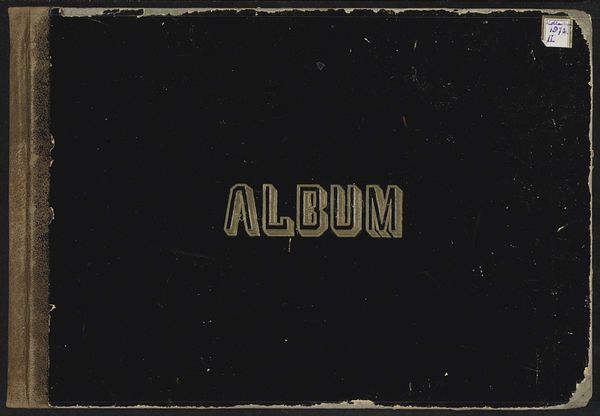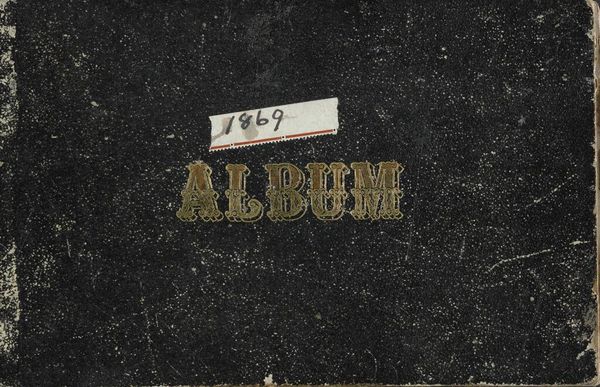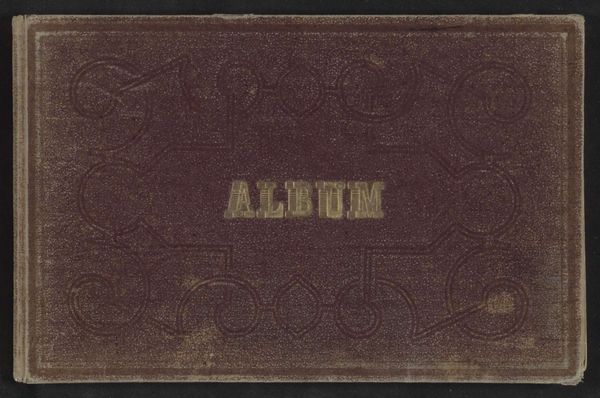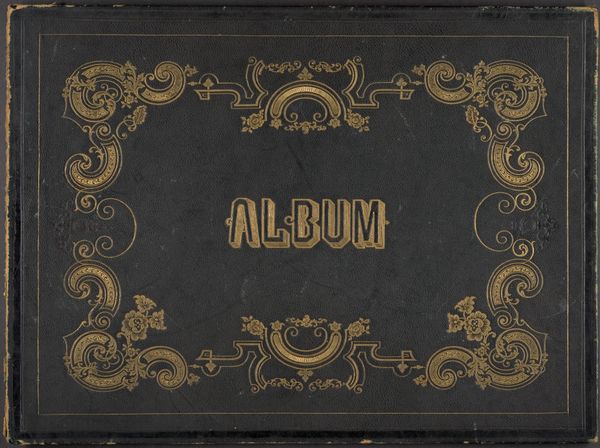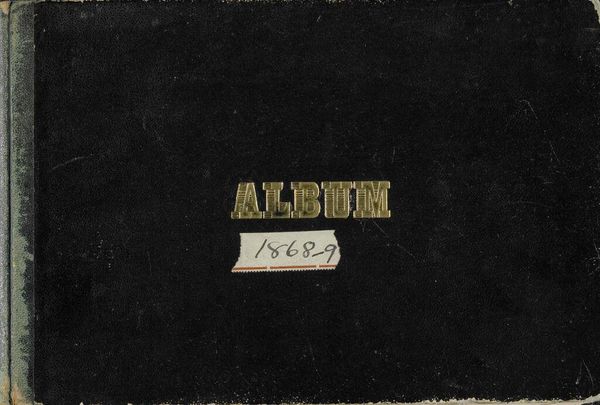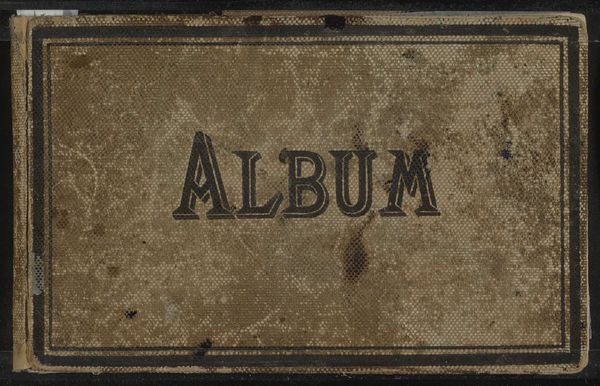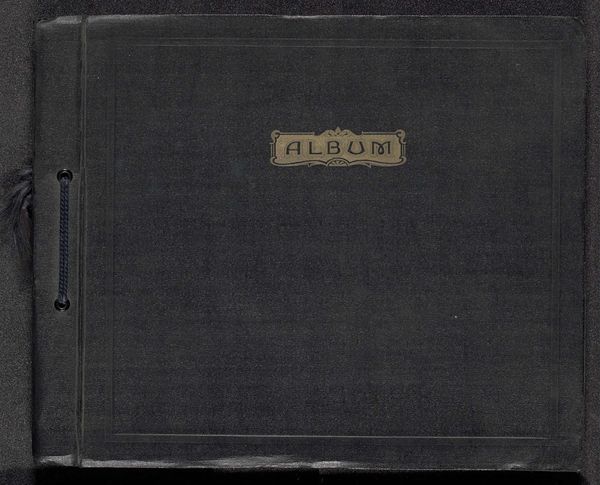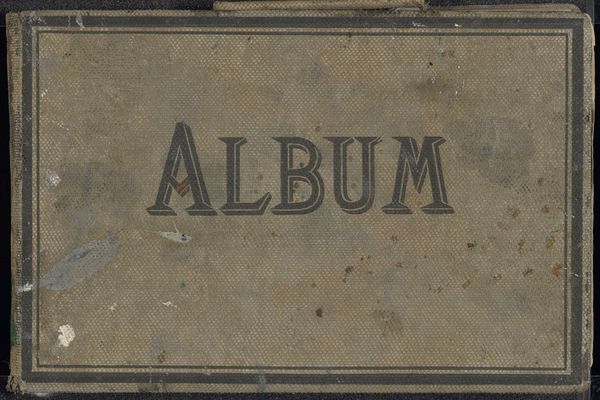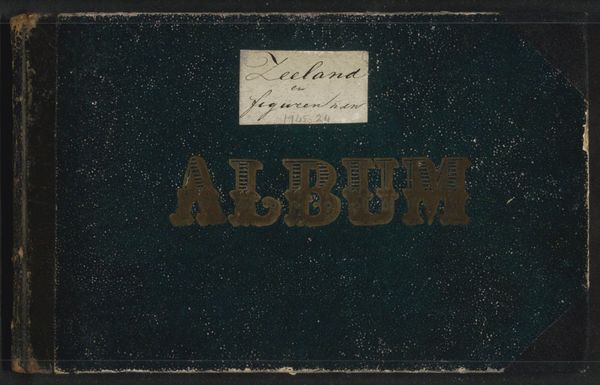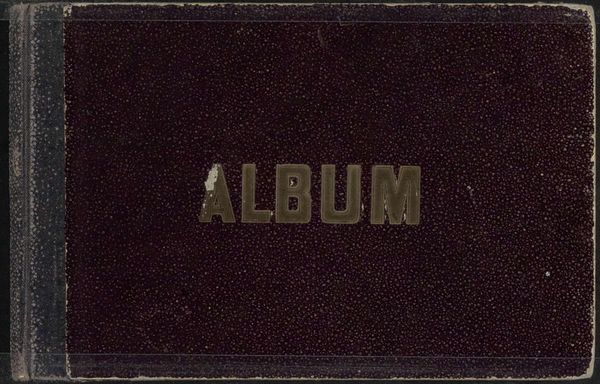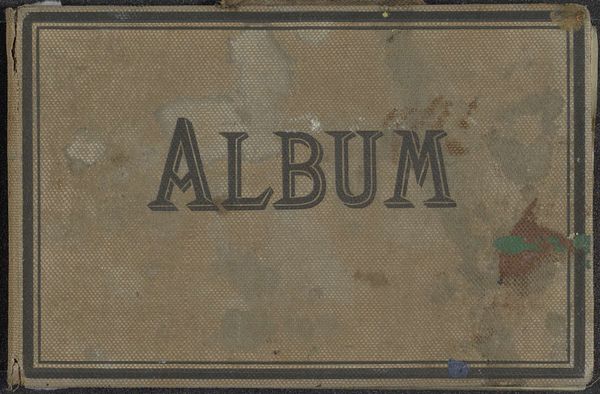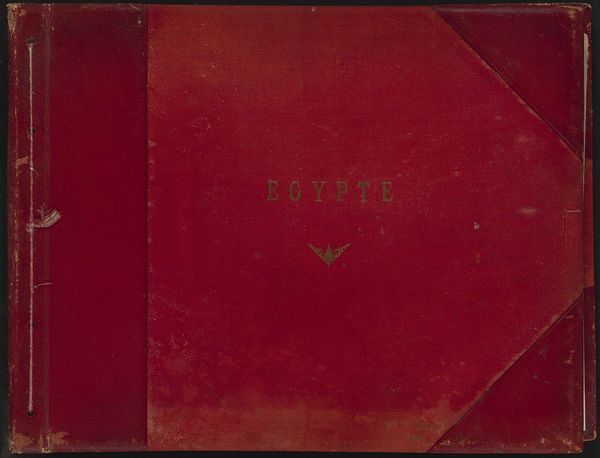
Dimensions: height 200 mm, width 296 mm, thickness 18 mm, width 575 mm
Copyright: Rijks Museum: Open Domain
Curator: What immediately strikes me is its stillness, a quiet dignity. The "Schetsboek met 58 bladen" [Sketchbook with 58 leaves], created between 1862 and 1867 by Isaac Gosschalk, is comprised of 58 pages of mounted albumen prints on paper. But its austere cover… it invites contemplation. Editor: Austere is right. It’s literally just an album. It looks like a product of labor. Someone selected materials, bound pages, stamped the cover. The condition of the cover indicates its traveled through time, been handled, loved perhaps. Curator: And contained within, these 58 albumen prints on paper… photographs capturing still lifes that surely spoke to the Romantic and Modernist sensibilities brewing at that time. These images encapsulate a yearning for stability and beauty amidst an era of intense social change. Do we know much about the artist, Gosschalk? Editor: Not much is recorded about his artistic process specifically. However, we can tell by its materials, the paper quality, and albumen printing technique—dominant at the time but incredibly laborious, demanding meticulous preparation and chemical understanding, it spoke of emerging industrialism too! Curator: That meticulousness hints at a tension inherent in nineteenth-century society. On the one hand, these are artworks created with great intention and labor, reflecting aesthetic movements. Yet, the chosen subject matter – still life – offers another layer: a conscious framing of everyday objects. Were they trying to find, or construct a sense of order through visual culture? How does photography give agency in times of uncertainty and erasure? Editor: Indeed. And if you really examine the cover, it whispers something else. The aging, the slight damage to the corners... These material aspects invite thoughts about ownership, about the lives it documented. It asks you to ponder what stories it could tell. Curator: That’s an astute point. These works act almost as a mirror reflecting the shifting dynamics of society itself—an industrial revolution juxtaposed against artistic idealism. A photograph meant as an individual expression became enmeshed within a complex, industrial process. I like thinking about how all those things relate to one another. Editor: I appreciate that we see the evidence of labor meeting intention in a consumable and transportable product—even its cover, humble and dark, displays care despite degradation over time. I now feel connected to labor history here!
Comments
No comments
Be the first to comment and join the conversation on the ultimate creative platform.
